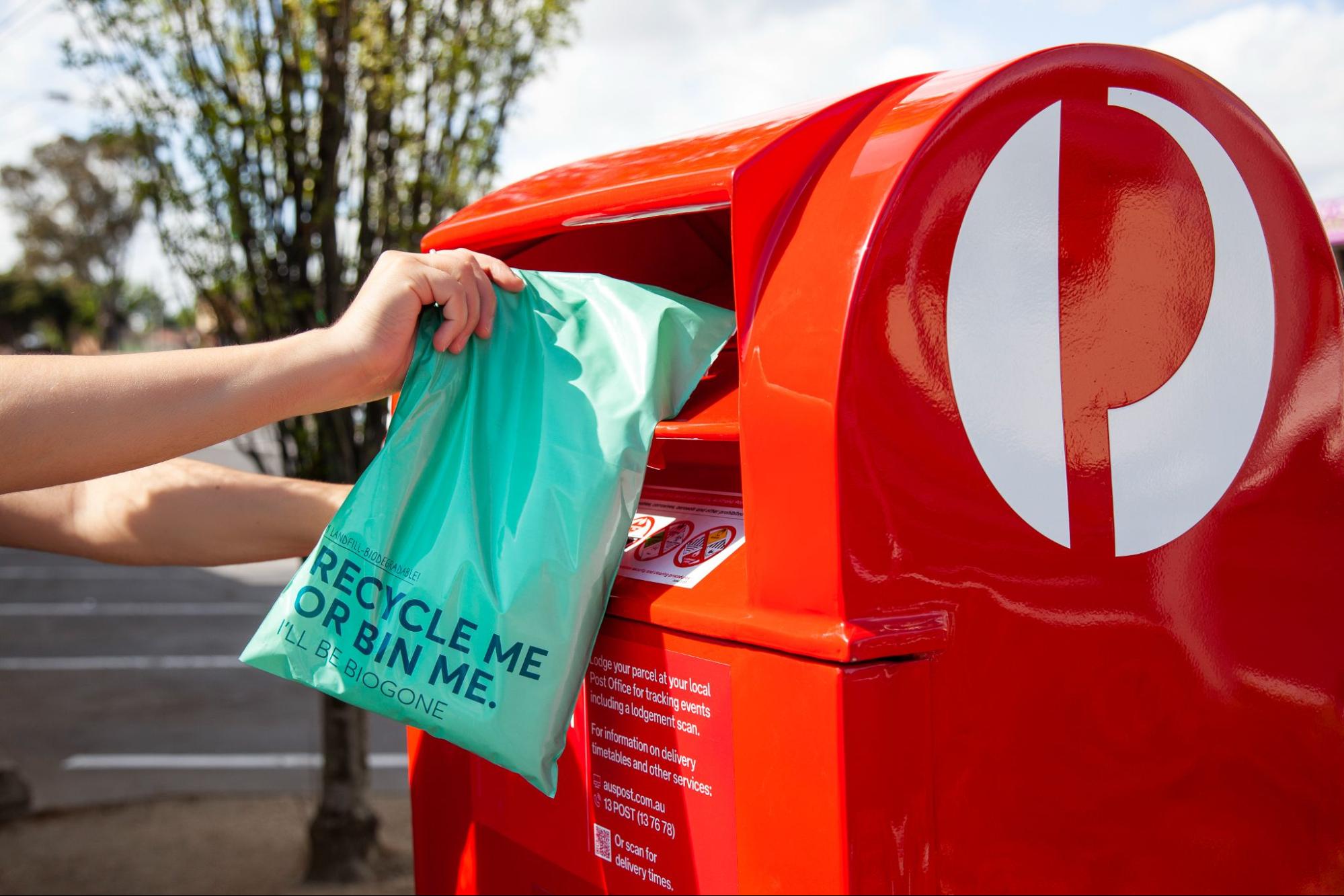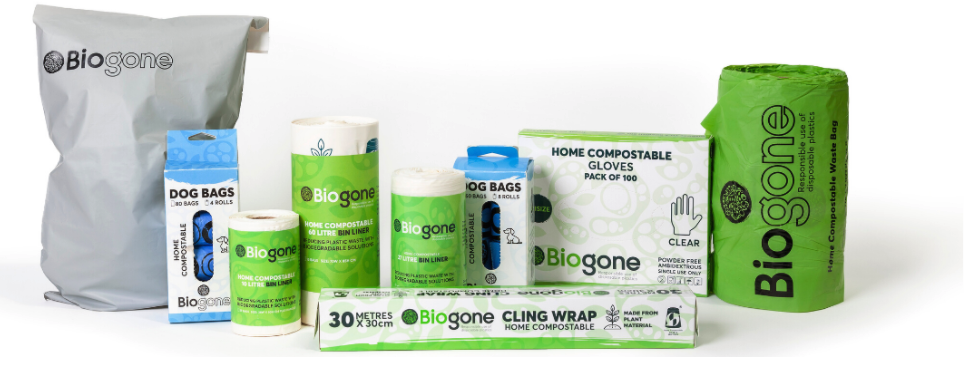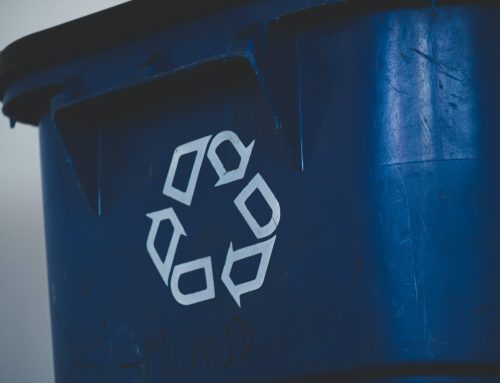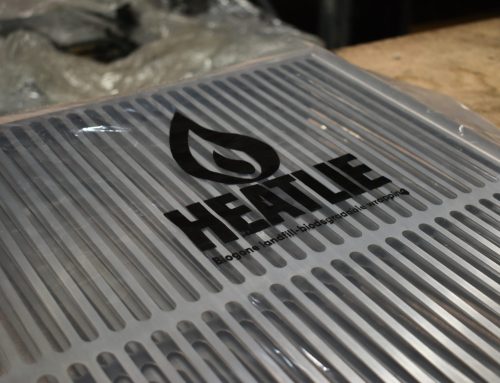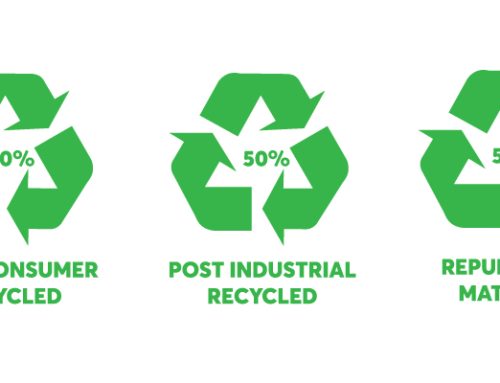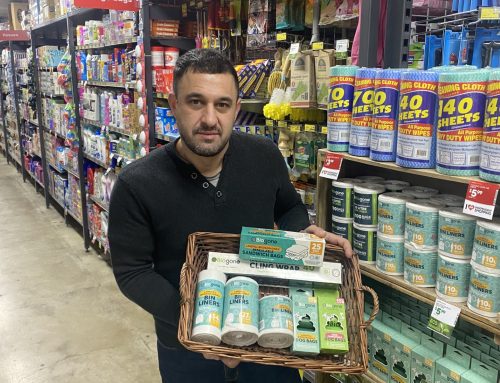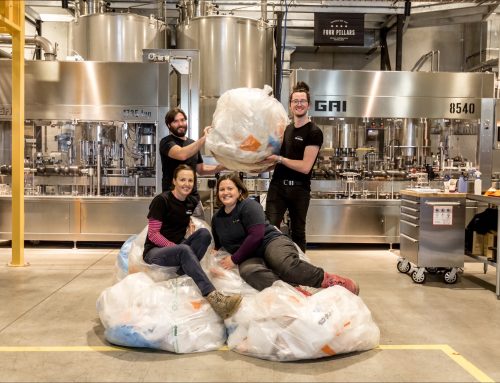People are becoming more aware of their ecological footprint and how traditional single-use plastic waste impacts the environment. We’ve seen an increase since the pandemic of online shopping, takeaway food and coffee cups, disposable masks and gloves; each taking a long time to break down and damaging the ecosystem.
Alternative options such as biodegradable and compostable packaging materials are creating a new buzz for consumers and businesses.
However, there is a lot of confusion that arises between the terms ‘biodegradable’ and ‘compostable’. What exactly differentiates the two and which is a better option to purchase? And how can you minimise your impact on the environment and make more eco-friendly decisions using biodegradable and compostable products?
For the differences between biodegradable and compostable packaging materials keep reading below.
Biogone was founded by eco-conscious people, Ross Headifen and John Mancarella to provide the public with a logical solution and more environmentally safe alternative to disposable plastics.
What is biodegradable packaging?
Biodegradable packaging is made to break down, quicker than conventional plastics into its natural components over time.
At Biogone, our landfill-biodegradable plastics have a proprietary additive that helps the plastic biodegrade naturally in landfills. The biodegradation only begins when the plastic is exposed to a microbe-rich environment, such as a landfill. The additive attracts microbes to the plastic and they start to digest it. As they do this, the enzymes (the microbes secrete) break the carbon bonds in the plastic molecule allowing the microbes to digest them for their energy. As more enzymes are secreted, more atoms are removed from the plastic molecule (called depolymerisation) which the microbes can digest.
Landfill-biodegradable plastic products:
- Are strong and durable like conventional plastics.
- Are recyclable with REDcycle and other mainstream soft plastics
- Will biodegrade approximately 90+% faster than conventional plastics once disposed of to landfill.
- Will biodegrade to a humus-like material (organic matter) which is a natural plant fertiliser and biogas.
- Do not fragment into microplastics during biodegradation.
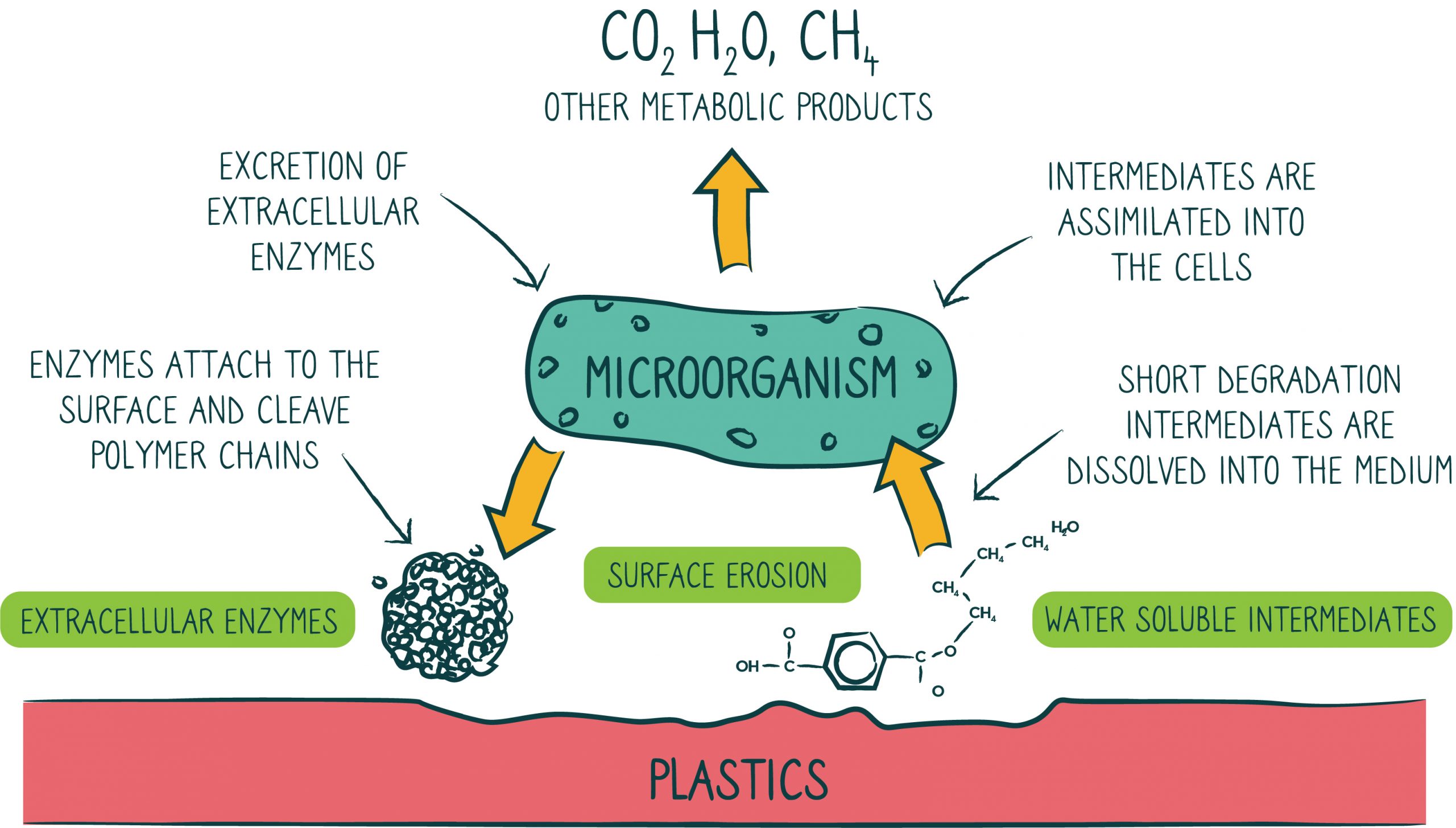
From Mueller, R.J., Biodegradability of polymers: Regulations and methods for testing, in Biopolymers, Steinbuchel, A., Ed., vol. 10., Wiley-VCH, Weinheim, Germany, 2003.)
The benefit to this technology, is the methane produced from accelerated landfill-biodegradable plastics, can be captured within the time frame the landfill is actively managed, rather than being released into the atmosphere after the landfill has closed and stopped being managed. This captured methane can be used for fuel and energy production.
At Biogone, our landfill-biodegradable plastics have the sturdiness and versatility of traditional plastics, but break down in landfills over a period of tens of years – compared to traditional plastics taking up to hundreds of years to break down.
‘Oxo-degradable’ is another label, however, is a very different process. Degradable plastic is a plastic with a metallic salt additive that sets off a slow chemical reaction and over 12-24 months will cause the plastic to fragment into little pieces. This has nothing to do with biodegradation and microorganisms. Also, the reaction will only work in the presence of oxygen and sunlight.
So, if a degradable plastic is buried in a landfill where there is no sunlight and very little oxygen, it will stay there like conventional plastic, not degrading. Therefore for degradable plastic to fragment down into little pieces it has to be up on top of the ground and there those little pieces will blow around and disperse into the environment, which is very harmful to wildlife and ecosystems.
Biogone’s landfill-biodegradable products do not feature any ‘degradable’ additives and does not fragment down to microplastics during biodegradation.
From 2022, oxo-degradable technology will be phased out under the 2025 National Plastic Plan.
What is Compostable Packaging?
There are two types of compostable materials, home compostable and commercially compostable.
Compostable products are made of organic material so that they can break down into compostable waste to be reused in the environment as nutrient-rich soil for plants.
What is the difference between compostable and biodegradable packaging?
The main difference between compostable and Bigone’s landfill- biodegradable packaging is the material it is made from and how it is disposed of.
What are home compostable plastics?
Home compostable plastics have an extra component in them, which is a highly biodegradable material. This allows home compostable products to biodegrade in cooler temperatures such as home compost bins or landfills. Their biodegradation rates are longer than commercial compost facilities but still relatively fast being several months up to 1-2 years, depending on the plastic thickness. However home compostable plastic packaging is not recyclable.
Biogone’s home compostable products are certified for home compostability in accordance with Australian/NZ standard AS5810.
Benefits of home compostable products:
- Can be disposed of in a commercial compost facility (if available), home compost pile (based on the continents and residue) or rubbish bin destined for landfill. They can also be disposed of in some council green bins where permitted, however enquire with your local council.
- Will biodegrade in anaerobic conditions in a landfill, where the plastics’ internal energy (methane) can be captured, which can also be used to generate electricity.
What are commercial compostable plastics?
Commercial compostable packaging will biodegrade under commercial composting conditions as per AS4736. Currently, in Australia, there are several limitations for commercial compostable plastics that make them not a sustainable option because:
- For a compostable plastic to biodegrade it must be in a commercial compost facility with temperatures of 60 deg C, plenty of oxygen and good moisture levels. If those conditions are not met, the compostable plastic will not biodegrade as the microorganisms need those conditions to live.
- Due to their different composition, compostable plastics cannot be recycled with mainstream soft plastics. Their materials have different properties and would contaminate other conventional plastics if they were mixed together.
- There are very few commercial compost facilities in Australia, making it very unlikely that commercially compostable plastic will ever be transported there. Therefore if the plastic cannot be collected and delivered to a commercial compost facility, the alternative option for disposal is a general rubbish bin destined for landfill, where it will not biodegrade.
Both home and commercial compostable materials require a specific set of moisture, heat, and oxygen to break down into a nutrient-rich organic material.
Is biodegradable, home or commercial compostable packaging better?
The best option varies depending on many things, for example:
- What is the packaging strength required? Biogone’s landfill-biodegradable packaging is strong like conventional plastic, whereas home compostable products are less durable and have a shelf life.
- Does your council accept home or commercial compost packaging in the food and garden bin? For example Biogone’s home compostable kitchen caddy bin liners.
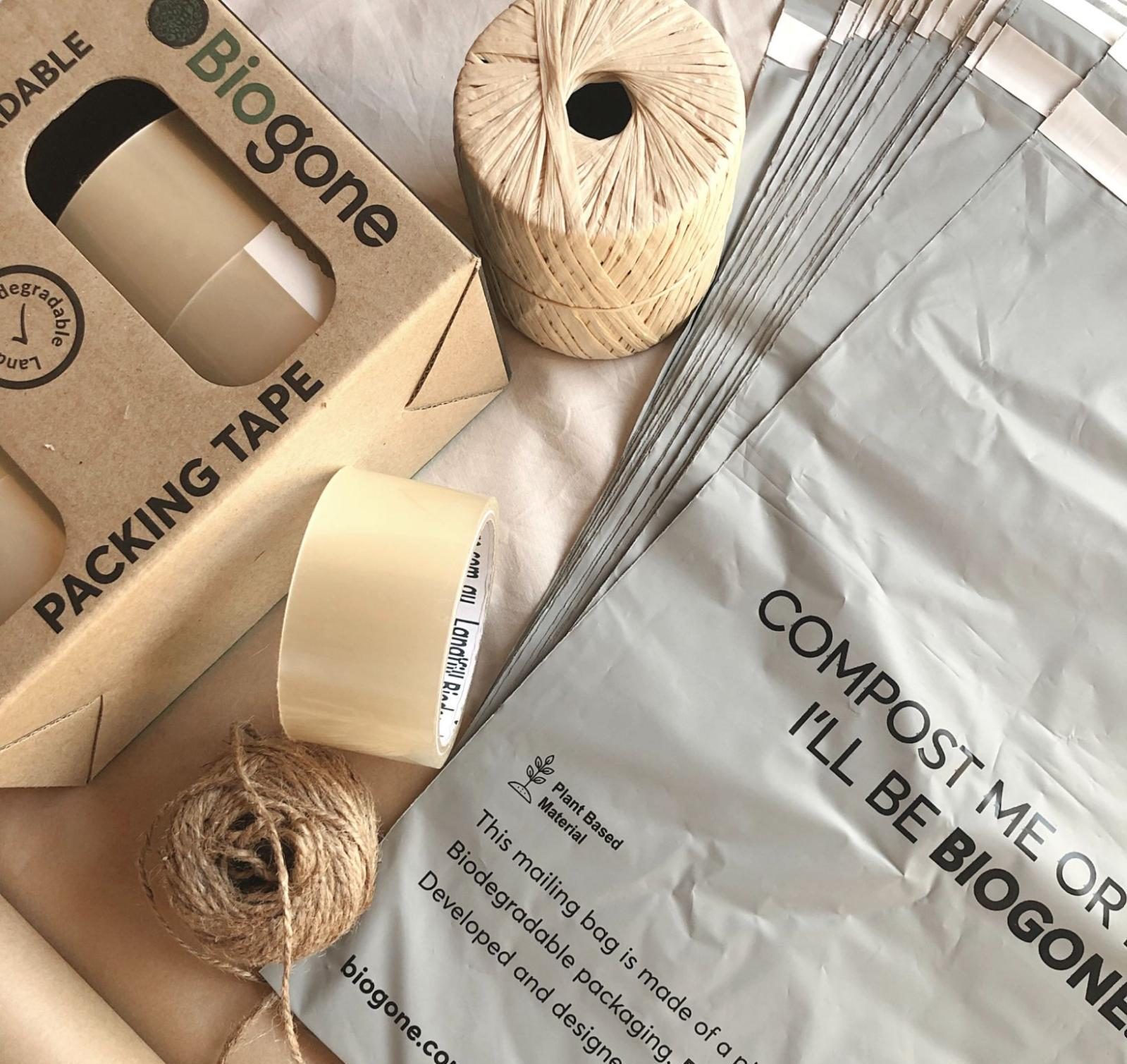
Photo: Knotted by Kristy
While they are all eco-friendly ways it also comes down to disposal:
- Biogone’s landfill-biodegradable plastic is recyclable and biodegradable in landfills.
- Home compostable products can be disposed of in a home compost depending on the contents (you wouldn’t throw your bin liner or pet poop in your home compost), or the presence of any toxic or non-compostable residues. Alternatively, it can be disposed of in the general rubbish bin.
- Unfortunately due to the lack of infrastructure and commercial compost facilities to collect, sort and process commercial compostable packaging, the most common and convenient option is the general rubbish bin where it does not have the right conditions to biodegrade.
In summary Biogone’s landfill-biodegradable is the logical solution in most cases as it is recyclable in line with the 2025 National Packaging Targets, but when it cannot be recycled it can be disposed of to a landfill where it will biodegrade.
Alternatively, home compostable packaging is a great eco-friendly option depending on the use and disposal options available.
Landfill-biodegradable and home compostable packaging are the plastic smart options to deal with the current rate of 84% of plastic ending up in Australia’s landfills.
Check out Biogone’s landfill-biodegradable packaging products and home compostable products range today.


